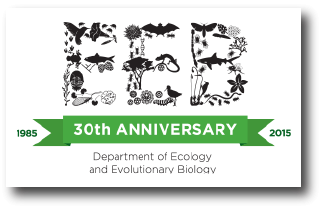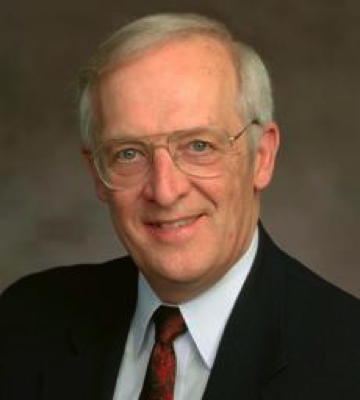We invite everyone from the Storrs community and beyond to attend and join us for a pre-seminar reception. Request more info.
- Stephen Pacala (Princeton University)
- Daniel Simberloff (University of Tennessee)
- Michael J. Donoghue (Yale University)
- David Hillis (University of Texas)
- Marc W. Feldman (Stanford University)
- Robert E. Ricklefs (University of Missouri St. Louis)
- May Berenbaum (University of Illinois)
- Gene E. Likens (University of Connecticut & Cary Institute of Ecosystems Studies)
- Susan R. Wessler (University of California-Riverside)
- Douglas J. Futuyma (Stony Brook)
- G. David Tilman (University of Minnesota)
- Mimi A. R. Koehl (University of California-Berkeley)
- Peter H. Raven (Missouri Botanical Garden)
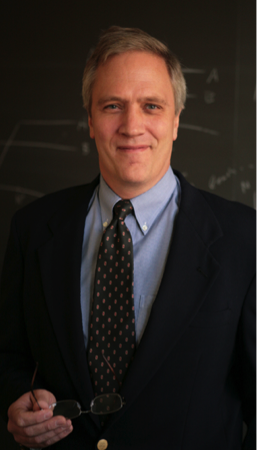 Stephen Pacala
Stephen Pacala
The Fate of the Land Carbon Sink (Video)
February 5th 4:00 PM in Biology Physics Building 130 ![]()
From his earliest days as a biological researcher, Steve Pacala has been building models. He began with models explaining the behavior of individual organisms or populations–why one lizard perches higher when a second lizard is present, for instance. Since then, his work expanded to models that characterize very nearly everything–such as how much atmospheric carbon can be stored in all the plants of the world, or whether changes in land might affect the climate to such a degree to cause large-scale shifts in the types of ecosystems that occupy certain regions. “I am interested,” he says, “in explaining the distribution and abundance of plant species, carbon and nutrient cycling, and the interactions between the biosphere and climate”: large-scale, long-term processes. In recognition of the power and success of his research, Dr. Pacala, the Frederick D. Petrie Professor in the Department of Ecology and Evolutionary Biology at Princeton and director of the Princeton Environmental Institute, has been elected a member of the American Academy of Arts and Sciences, a fellow of the American Association for the Advancement of Science, and a member of the National Academy of Sciences.
Dr. Pacala will be on campus from February 4th through 6th.
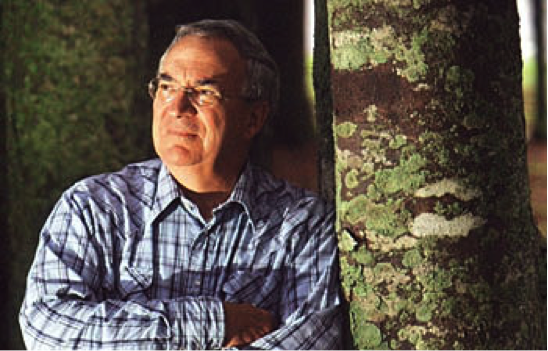 Daniel Simberloff
Daniel Simberloff
What’s New in Invasion Biology and Management, and Why are They Controversial (Video)
February 12th 4:00 PM in Biology Physics Building 130 ![]()
Some biologists have highly focused research interests — the physiology of a particular group of animals, reproductive syndromes in a single plant family. Not Daniel Simberloff, who describes his research interests as: Ecology; Evolution; Conservation Biology. He has shown no more restraint in choosing to work on organisms that span the tree of life: fish, plants, mammals, snails, insects, birds, helminths, crabs. Dr. Simberloff has achieved considerable fame because of the scale and importance of his research — conducting a field test of the theory of island biogeography, developing innovative statistical methods for analyzing ecological data, demonstrating the importance of appropriate null models to test hypotheses, and, most recently, for extensive work on invasive species — what makes them invasive and the consequences of their invasion. But his fame is due as well to his perceptive insights into the flaws in widely held views and ecological models resulting in controversies about, for example, the interpretation of occurrence patterns and control of invasive plants and animals, among other subjects. Dr. Simberloff, who is the Gore Hunger Professor of Environmental Science at the University of Tennessee and Director of the Institute for Biological Invasions, has been widely honored by universities and professional societies for his extensive service and productivity —to date more than 300 publications. In 2012, he was elected to the National Academy of Sciences.
Dr. Simberloff will be on campus from February 11th through 13th.
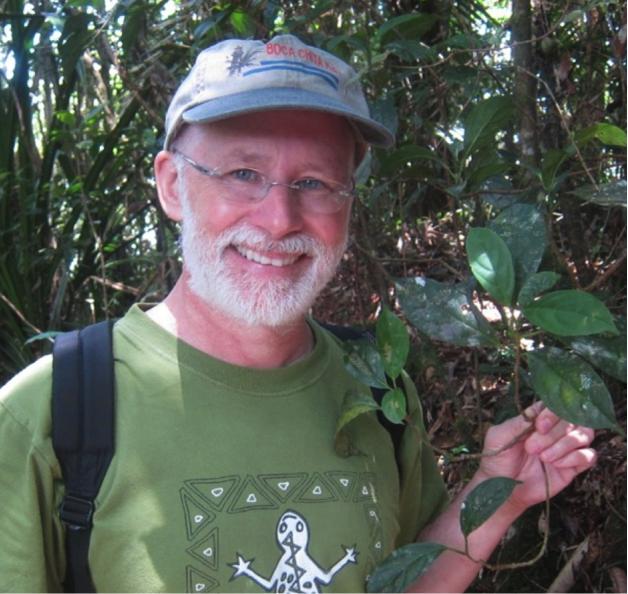 Michael J. Donoghue
Michael J. Donoghue
Viburnum Evolution Turned Upside Down: Implications for Diversification and Biome Shifting (Video)
February 19th 4:00 PM in Biology Physics Building 130 ![]()
From the very beginning of Mike Donoghue’s research career more than 30 years ago, there has been Viburnum. And Viburnum remains in the center of the domain in which he works. But over the years, it has had to share this ever-expanding territory with a wide variety of other interests that range from single genera to the entire Tree of Life. Combining fieldwork from Namibia to Nepal with molecular analyses and modeling approaches, Donoghue’s work is both empirical and theoretical. Always his work has focused on the evolution of plants. And always he has looked for opportunities to use his data not just to reveal the evolutionary history of individual genera or orders but also to learn about the evolutionary process itself. He has pioneered new approaches to understanding diversification rates, species concepts, biogeography, breeding system evolution, the connection between molecular evolution and life history traits, and what diversification rates tell us about the origin of rain forests. Donoghue has published well over 200 papers and won scores of grants. The scope and the importance of his work have earned him countless honors and awards, including election to the National Academy of Sciences. He currently serves as the Sterling Professor of Ecology and Evolutionary Biology within the Department Ecology and Evolutionary Biology at Yale University.
Dr. Donoghue will be on campus from February 18th through 20th.
 David Hillis
David Hillis
The Tree of Life and Evolution of Animal Nervous Systems
March 5th 4:00 PM in Biology Physics Building 130 ![]()
David Hillis’s research is all about the Tree of Life, and how we can use it to understand processes of evolution. His work is focused less on a particular group of organisms than on exploring and refining the potential of molecular analysis to reveal the evolutionary history of many different groups, including amphibians, reptiles, fish, bats, fireflies, viruses, and the Texas Longhorn cattle on his ranch, the Double Helix. His research has yielded fundamental insights into the molecular and evolutionary phenomena that are reflected in molecular phylogenies while also advancing the statistical methods used to conduct those analyses. His writing, especially of widely used textbooks, has made molecular phylogenetics substantially more accessible to both this and the next generation of students and researchers. Professor Hillis has more than 200 publications to his credit and has directed the education of more than 40 Ph.D. students. In recognition of his contributions, he has received many honors, including election to the American Academy of Arts and Sciences in 2000 and, in 2008, to the National Academy of Sciences.
Dr. Hillis will be on campus from March 4th through 6th.
 Marc W. Feldman
Marc W. Feldman
Cultural Contingency and Evolution (Video)
March 10th 4:00 PM in Biology Physics Building 130 ![]()
Born in Australia, Marc Feldman arrived at Stanford as a 22-year-old Ph.D. student in mathematical biology. He has been there essentially ever since. His dissertation research was in theoretical population genetics, and although he has never left that subject, the breadth of issues he addresses has greatly expanded. He is particularly interested in the evolution of complex genetic systems such as the multigene system that governs the human immune response and the evolution of cultural features of the human species, including language and the spread of plant domestication. He uses mathematical and simulation models to analyze problems in genetics and has been vigorous in rebutting attempts to use genetics naively to explain differences in IQ and behavior. While his work is almost always mathematical, almost always theoretical, and often both, it has real-world applications: What are the evolutionary consequences of cultural practices including preference for male babies in China? What does genomic evolution tell us about where exactly in Africa modern humans originated? What can modeling exercises tell us about the evolution of altruism? How does mating system affect the evolution of migration? He has published more than 500 papers and is the author or co-author of over 14 books. He is the recipient of numerous awards recognizing the extent and importance of his research. In 2013 he was elected to the National Academy of Sciences.
Dr. Feldman will be on campus on March 10th.
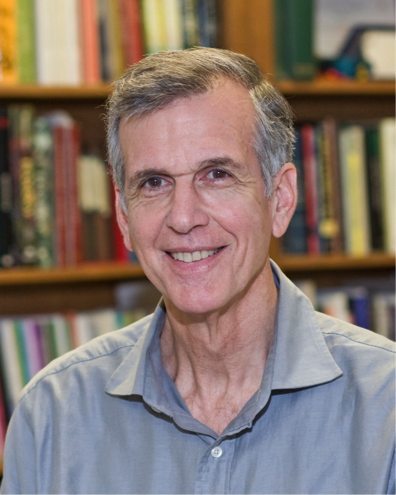 Robert E. Ricklefs
Robert E. Ricklefs
Intrinsic Dynamics of the Regional Community (Video)
March 12th 4:00 PM in Biology Physics Building 130 ![]()
Robert Ricklefs has been studying birds and learning what they can tell us about evolution for more than 50 years. There have been occasional excursions into territory occupied by other organisms—green iguanas, euglossine bees, deciduous trees in Ontario—but then he’s quickly back to the bananaquits and blue-footed boobies, starlings and streaked saltators. His particular interests relate to the interpretation of species richness patterns, the diversification not only of the birds but of their life history traits, and the analysis of tradeoffs such as that between growth rate and adult fitness. Some of his most influential research demonstrated the impact of large-scale ecological processes on the structure of local communities and refined the concept of the taxon cycle as it applies to West Indian birds. Dr. Ricklefs, the Curators’ Professor of Biology at the University of Missouri, St. Louis, has had an enormous influence not only on ecologists and evolutionary biologists but also on generations of undergraduate and graduate students, particularly through his two very successful textbooks, Ecology, and The Economy of Nature, both of which were first published in the 1970s and the latter of which appeared in its seventh edition in 2013. Over his long and productive career, in which he has published more than 300 scientific papers, Dr. Ricklefs has received countless honors, including, in 2009, election to the National Academy of Sciences.
Dr. Ricklefs will be on campus March 11th through 13th.
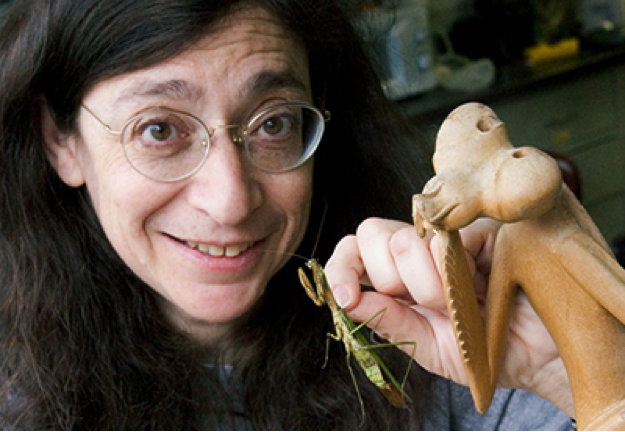 May Berenbaum
May Berenbaum
Applied Bee-nomics: Can Science Save the Honey Bee? (Video)
March 24th 4:00 PM in Biology Physics Building 130 ![]()
May Berenbaum is an ecological evolutionary entomologist. She investigates insects and the plants they eat—the chemicals the plants then produce to avoid being eaten—how the insects then break down those defensive chemicals—and what happens next. Dr. Berenbaum’s research on this coevolutionary “arms race” between insects and plants has revolutionized our understanding of the evolutionary and ecological implications of plant-herbivore interactions and produced very practical applications for the management of agricultural pests, leading to the development of sustainable management practices. In addition to the more than 230 scientific papers and many book chapters she has produced, Dr. Berenbaum is committed to improving scientific literacy and has written many magazine articles and six books about insects for the general public. She has been on the faculty of the Department of Entomology at the University of Illinois in Urbana-Champaign since 1980 and has served as head of the department for more than 20 years. She has been widely honored both for her scientific achievements and for her dedication to education and outreach, and in 1994 she was elected to the National Academy of Sciences.
Dr. Berenbaum will be on campus March 23rd through 25th.
Gene E. Likens
Acid Rain: The Long, but Unfinished Journey from Discovery to Political Action (Video)
April 2nd 4:00 PM in Biology Physics Building 130 ![]()
Gene Likens is an internationally renowned limnologist and ecologist. He is best known for discovering the link between air pollution and acid rain. That work brought to the attention of the general public the fact that human activities have the power to alter the environment in fundamental ways, and resulted in national and international regulatory changes. With 50 years of research at the Hubbard Brook Experimental Forest in the White Mountains of New Hampshire, he and dozens of other investigators have documented both the short-term and long-term consequences of acid rain in terms of soil chemistry, water chemistry and the composition of plant and animal communities at the ecosystem and landscape scales. They have demonstrated that long-term, large-scale studies—and only long-term, large-scale studies—can answer many of the questions that we most need to answer. He is founder and long time president of the Institute for Ecosystem Studies in Millbrook, NY. With over 580 publications and 24 books, Dr. Likens’ honors include the Blue Planet Prize, the National Medal of Science, and an Einstein Professorship from the Chinese Academy of Sciences. He is a fellow of the American Academy of Arts and Science, the American Philosophical Society, and a member of the National Academy of Sciences. He recently joined the faculty of the University of Connecticut, where he serves as a Distinguished Research Professor and Advisor on Environmental Issues to President Herbst. His generosity of spirit in dealing with graduate and undergraduate students during his time at UConn has made it clear that, as great as his honors are, they are exceeded by his humility.
Dr. Likens will be on campus April 1st through 3rd.
Susan R. Wessler
Deciphering the Strategies Used by a Very Successful Transposable Element
April 9th 4:00 PM in Biology Physics Building 130 ![]()
Susan Wessler is a molecular geneticist whose work has revolutionized our understanding of the importance of transposable elements in the evolution of genes and genomes. Transposable elements are pieces of DNA that can move from one chromosomal location to another, and they are the most abundant component of the genomes of all multicellular plants and animals, including humans. Although few of the transposons in a genome can still move, the few that can are important because they generate genetic diversity, which is the raw material of evolution. For example, Dr. Wessler and coworkers identified a rice transposon that generates up to 25 new copies every generation, putting these copies in novel locations in the genome, where they may affect the plant’s fitness. Her laboratory has developed new computational techniques to identify active transposable elements and the total content of transposable elements in a genome. She is active in educational initiatives, co-authoring a widely used genetics textbook. She has developed what she calls “Dynamic Genome Courses,” allowing freshmen to personally experience the thrill of scientific discovery, instead of just reading about it. Dr. Wessler occupies the Neil A. and Rochelle A. Campbell Presidential Chair for Innovations in Science Education at the University of California Riverside and is a Howard Hughes Medical Institute Professor. She has been much honored for both her research and her contributions to education. Dr. Wessler is a Fellow of the American Academy of Arts and Sciences, the American Association for the Advancement of Sciences and the American Philosophical Society. In 1998 she was elected to the National Academy of Sciences, and is currently its Home Secretary.
Dr. Wessler will be on campus April 8th through 10th.
 Douglas J. Futuyma
Douglas J. Futuyma
Insects on Plants: The Evolution of Insect-Plant Associations (Video)
April 14th 4:00 PM in Biology Physics Building 130 ![]()
Douglas Futuyma, a Distinguished Professor of Ecology and Evolution at Stony Brook University, is an evolutionary biologist. It would not be an exaggeration to say that he wrote the book on evolutionary biology: in their various editions, his authoritative and accessible textbooks have enlightened tens of thousands of students over the past 35 years. His extensive research has advanced our understanding of ecological divergence, speciation and other evolutionary processes and, in particular, the complexity of interactions between plants and their herbivores—how, for instance, those interactions are influenced by niche breadth, behavior, competition and genetic variation and how the interactions affect, in turn, population genetics, community structure and evolution. With his command of both the factual and theoretical aspects of evolution, he has also addressed far-reaching questions such as: What are the uses of evolutionary biology?, and What is science’s greatest challenge? Dr. Futuyma is Past-President of the American Institute of Biological Sciences, the Society for the Study of Evolution, and the American Society of Naturalists. For his many contributions in research, education and service to the larger community, Dr. Futuyma has been much honored, including, in 2006, election to the National Academy of Sciences.
Dr. Futuyma will be on campus April 13th through 15th.
 G. David Tilman
G. David Tilman
Biodiversity: From Evolutionary Origins to Ecosystem Functioning (Video)
April 20th 4:00 PM in Biology Physics Building 130 ![]()
David Tilman has been combining ecological theory and experimental field work for more than 40 years. Pursuing his dual interests in biology and math, Dr. Tilman has been particularly active in exploring how environmental conditions, especially nutrients, regulate the number of species in a community and, working first with plankton and then with prairie plant communities, exploring the conditions that allow species to coexist. His long-term, phenomenally well-replicated field work at Minnesota’s Cedar Creek Ecosystem Science Reserve, for which he currently serves as Director, has yielded critical insights into the interrelationships between ecosystem structure and function, as well as their sensitivity to global change drivers.. In recent years, Dr. Tilman’s research has increasingly investigated the effects of interactions involving nitrogen deposition, rising carbon dioxide concentrations, and biodiversity on community productivity and stability. His prolific and incisive scholarship has contributed to his designation as the most highly cited environmental scientist of the past decade. Dr. Tilman is Regents Professor and the McKnight Presidential Chair in Ecology at the University of Minnesota and holds a joint appointment at University of California, Santa Barbara’s Bren School of Environmental Science & Management. He is fellow of the American Association for the Advancement of Science and the American Academy of Arts and Sciences, and in 2002 he was elected to the National Academy of Sciences.
Dr. Tilman will be on campus from April 19th through 21st.
 Mimi A. R. Koehl
Mimi A. R. Koehl
Locomotion in A Turbulent World: Recruitment into Marine Communities (Video)
April 23rd 4:00 PM in Biology Physics Building 130 ![]()
Mimi Koehl, a Professor of Integrative Biology at the University of California, Berkeley, earned her Ph.D. in Zoology at Duke University. She studies the physics of how organisms interact with their environments, focusing on how microscopic creatures swim and capture food in turbulent water flow, how organisms glide in turbulent wind, how wave-battered marine organisms avoid being washed away, and how olfactory antennae catch odors from water or air moving around them.
Professor Koehl is a member of the National Academy of Sciences and the American Academy of Arts and Sciences. Her awards include a MacArthur “genius grant”, a Presidential Young Investigator Award, a Guggenheim Fellowship, the John Martin Award (Association for the Sciences of Limnology and Oceanography, “for research that created a paradigm shift in an area of aquatic sciences”), the Borelli Award (American Society of Biomechanics, for “outstanding career accomplishment”), the Rachel Carson Award (American Geophysical Union), and the Muybridge Award (International Society of Biomechanics “highest honor”).
Dr. Koehl will be on campus April 22nd through 24th.
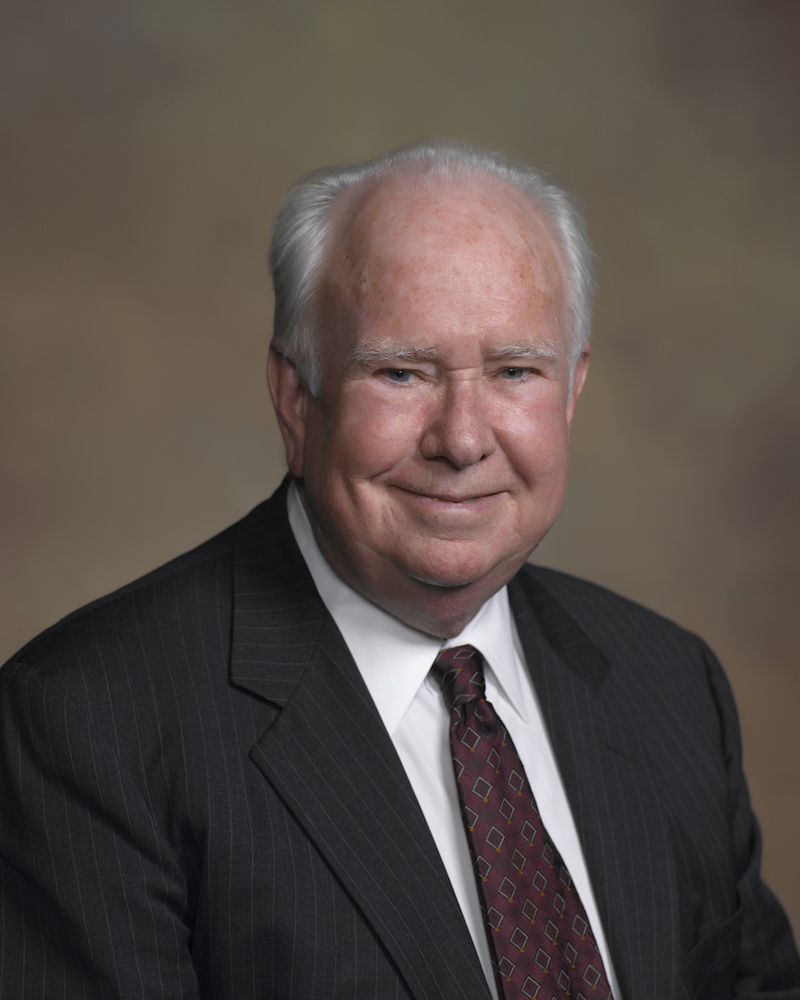 Peter H. Raven
Peter H. Raven
Saving Plants, Saving Ourselves
April 30th 4:00 PM in Biology Physics Building 130 ![]()
Peter Raven, the George Engelmann Professor of Botany at Washington University, earned his stripes as an evolutionary biologist more than 50 years ago when he published a seminal study on coevolution of plants and butterflies with Paul Ehrlich. Since that time, Dr. Raven has continued to do influential research in evolutionary botany, especially on the evening primrose family, has written a widely used textbook (now in its eight edition), served on countless editorial boards and governmental panels, and has led the Missouri Botanical Garden to a position of international eminence. Perhaps his greatest contribution, however, has been as an ambassador for biological diversity and conservation. Speaking and writing for both biologists and the general public, Dr. Raven is a globally recognized and universally respected biologist. He is not an alarmist. He does not raise his voice. But because of the thoroughness of his analyses and the thoughtfulness of his conclusions, when he speaks, people know they should listen. And they do. Travelling widely and constantly, he has informed millions of people about threats to the persistence of species, why we need to care about extinction events and what we can do to prevent more of them. For his continuing efforts in these endeavors, he has been extensively honored. His awards include the National Medal of Science and the International Cosmos Prize. He served on President Clinton’s Committee of Advisors on Science and Technology. He was elected a member of U.S. National Academy of Sciences in 1977 and is also a member of the national academies of other countries including Argentina, Brazil, China, Denmark, India, Italy, Mexico, Russia, Sweden and the UK. Time magazine had it right when it characterized Raven as a “Hero for the Planet.”
Dr. Raven will be on campus April 29th through May 1st.
